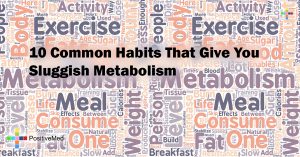Number of foods available at a meal determines the amount consumed
This post originally published in FUTURITY
The more food choices served at a meal, the more a person will eat, according to new research that finds single-dish meals like soup, stew, or stir-fry cut down on the amount of food and calories consumed.
Published in Eating Behaviors, the study is the first to show these links and offers additional evidence in a growing body of research that indicates the environment plays a powerful role in determining how much we eat.

“It’s the only explanation of why we’re getting fatter,” says David Levitsky, professor of nutritional sciences and of psychology at Cornell University. “Our biology has not been changing over the past 40 or 50 years, but our weight certainly has.”
For the study, Levitsky and colleagues conducted two experiments.
First, they served 20 college students buffet-style meals three times a week for two weeks. The students were randomly served an entrée and two side dishes (chicken, a vegetable and a carbohydrate such as rice or potatoes), a low-carbohydrate meal (chicken and a vegetable), or a vegetarian meal (a vegetable and a carbohydrate) in a buffet and told to take as much or as little as they wished.
The participants ate more in terms of quantity and calories of the entrée-and-two-sides meal, less of the low-carb meal, and the least of the vegetarian meal.
“If you pulled away the protein, you increase the amount you eat of the other foods, but not enough to make up for the caloric deficit. The same thing occurs if you pull the starches away,” Levitsky says.

Then the researchers conducted a second experiment, to see what would happen if participants were served the same foods prepared either individually or in a stir-fry (onions, corn, carrots, peas, and broccoli) or a pasta dish (onions, celery, tomatoes, penne pasta, and cauliflower).
Participants ate significantly more when the foods were served separately versus as a composite meal. “Again, it’s the same idea. You see more components, you tend to want to eat more,” Levitsky says.
The findings have several implications. First, they may help explain why “low-carb” diets work—because the diets restrict the number of foods one eats. Similarly, one reason vegetarians are typically thinner than non-vegetarians is that they, too, restrict the number of foods they eat.
“We wanted to see if people are prevented from eating one of the foods, will they compensate by eating more of the others?” Levitsky says. “We found that people do increase the amount they consume of the other types of foods, but never enough to make up for the deficit.”

Second, the findings add to our understanding of the causes of obesity, Levitsky says.
“One idea is that we have evolved from creatures for whom the sight of food is the stimulus to eat, because they couldn’t store the food. I think that’s what these findings are representing, this mechanism that tells us ‘the more food is available, the more you have to eat it, because you never know when it’s not going to be there,’” Levitsky says.
“Unfortunately, evolution occurred before we invented the refrigerator. So now we have the refrigerator, the freezer, the vending machine, and this is in part why we’re getting fatter. Evolution requires hundreds of thousands of years. Vending machines, overnight.”





